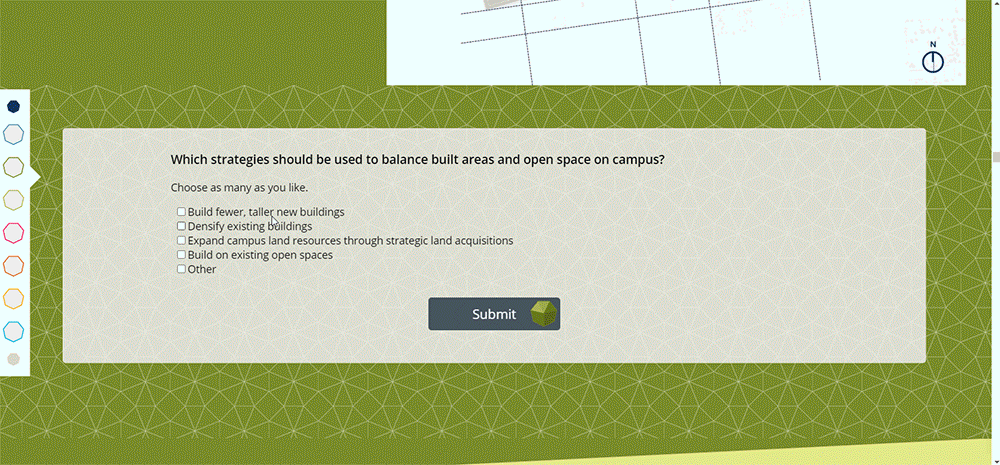Publication Spotlights Sasaki’s Innovative Research Initiatives
Learn more about research projects from across the practice
 Sasaki
Sasaki
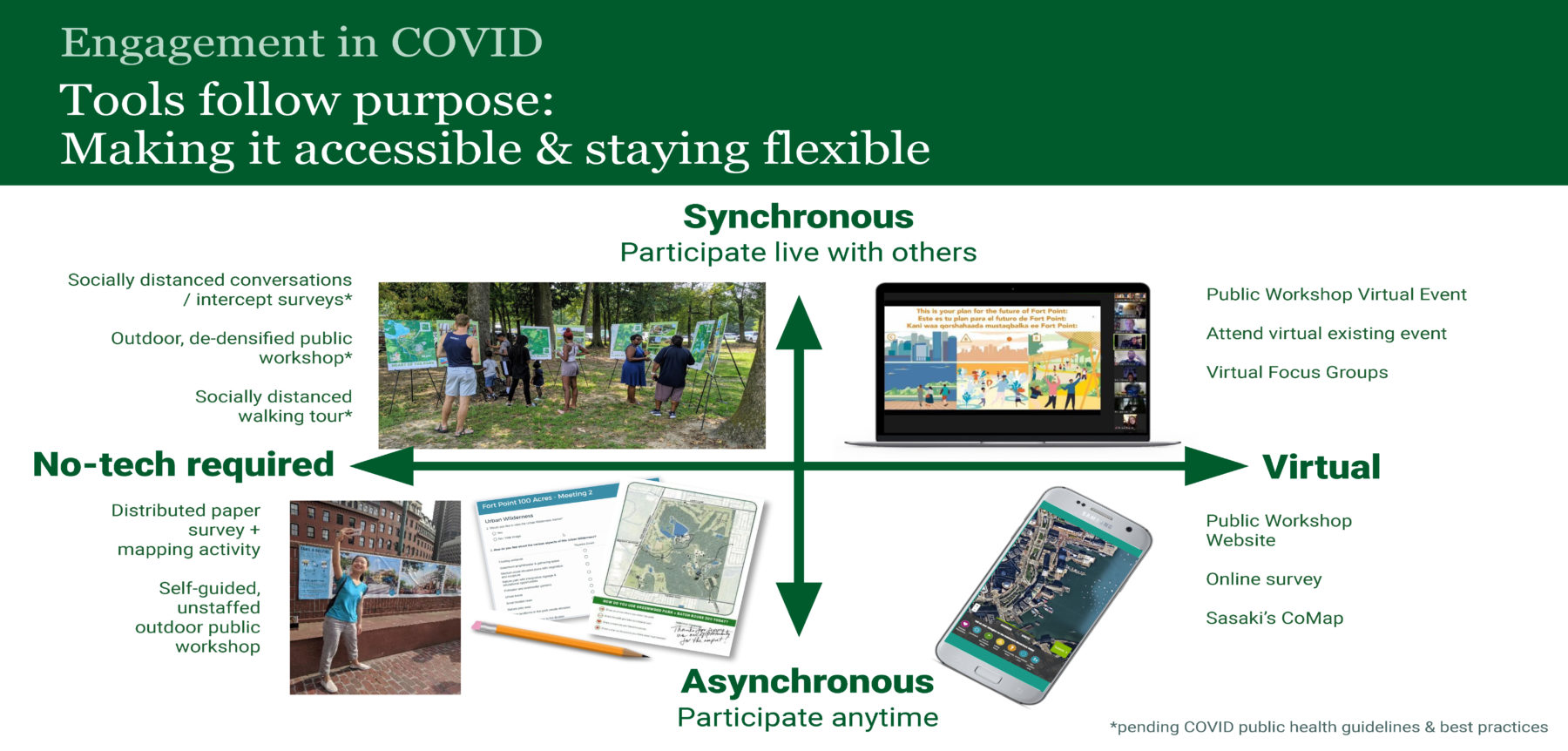
This article is an excerpt from Sasaki’s 2nd annual Research Publication. Read the entire publication here.
COVID has certainly changed our world in so many ways over the past year, and engagement is no different. Our teams have been testing new and adapted ways to connect with community members. Throughout it all, we have learned the importance of flexibility and being willing to adapt. Despite the challenging year, connecting with others has provided moments of shared joy. Ideas from community members and stakeholders have continued to enrich projects. Our hope is that lessons learned from 2020 can set the foundation for a “new normal” for community engagement that is more accessible, engaging, and fun.
Over the past year, our engagement strategies have been increasingly intention-based, focusing on letting intention guide the process, rather than being limited by a prescriptive tools-based approach. We center our processes on shared goals, and then identify which methods of outreach can be most accessible at that point in time, taking into account the evolving COVID context and community capacity. Providing multiple options for engagement is more important than ever. Many of our projects have pursued hybrid approaches that pair opportunities for real-time virtual conversations (synchronous options) with the ability to access information and provide input at any time that is convenient (asynchronous options). We simultaneously have been seeking to balance virtual engagement with no-tech options.
Below are two examples of new methods of creative virtual engagement our team has developed and lessons we have learned.
Fort Point Team: Zach Chrisco, Jill Allen Dixon, Elaine Minjy Limmer, Laura Marett, Lanmuzhi Yang, Martin Zogran
Special thanks to The American City Coalition, BPDA, and translators Fatuma Hassan and Gabriela Herrera
On February 29, 2020, our team gathered at Artists for Humanity for an open community workshop, listening to feedback about 6 acres of new parks along the Fort Point Channel. Simultaneously, we launched an online survey with the same materials and feedback questions. Over the coming weeks, as we monitored the online survey results and began to analyze what we learned at the open house, COVID quickly closed down nearly all aspects of daily life.
Over the summer, in-person engagement continued to remain on pause, so we began discussing how to gather broader input on the parks, focusing on who was underrepresented in feedback gathered so far. We hoped to hear from Roxbury and Dorchester children and their families about what would be desirable in the future waterfront parks. We are especially thankful for The American City Coalition (TACC) who surveyed their contacts to gather input on how a virtual event could be most accessible: a smaller group discussion over Zoom in English, Spanish, and Somalian that would be engaging from the start and not feel like homework. TACC co-facilitated the event with Sasaki and the BPDA.
The virtual event became an interactive, “choose your own adventure” style of activity. This storytelling-based approach, brought to life with imaginative graphics, let the audience identify their desired ideal future park. At the end, the audience could see the future park they had designed together and imagine a fun day along the Fort Point Channel.
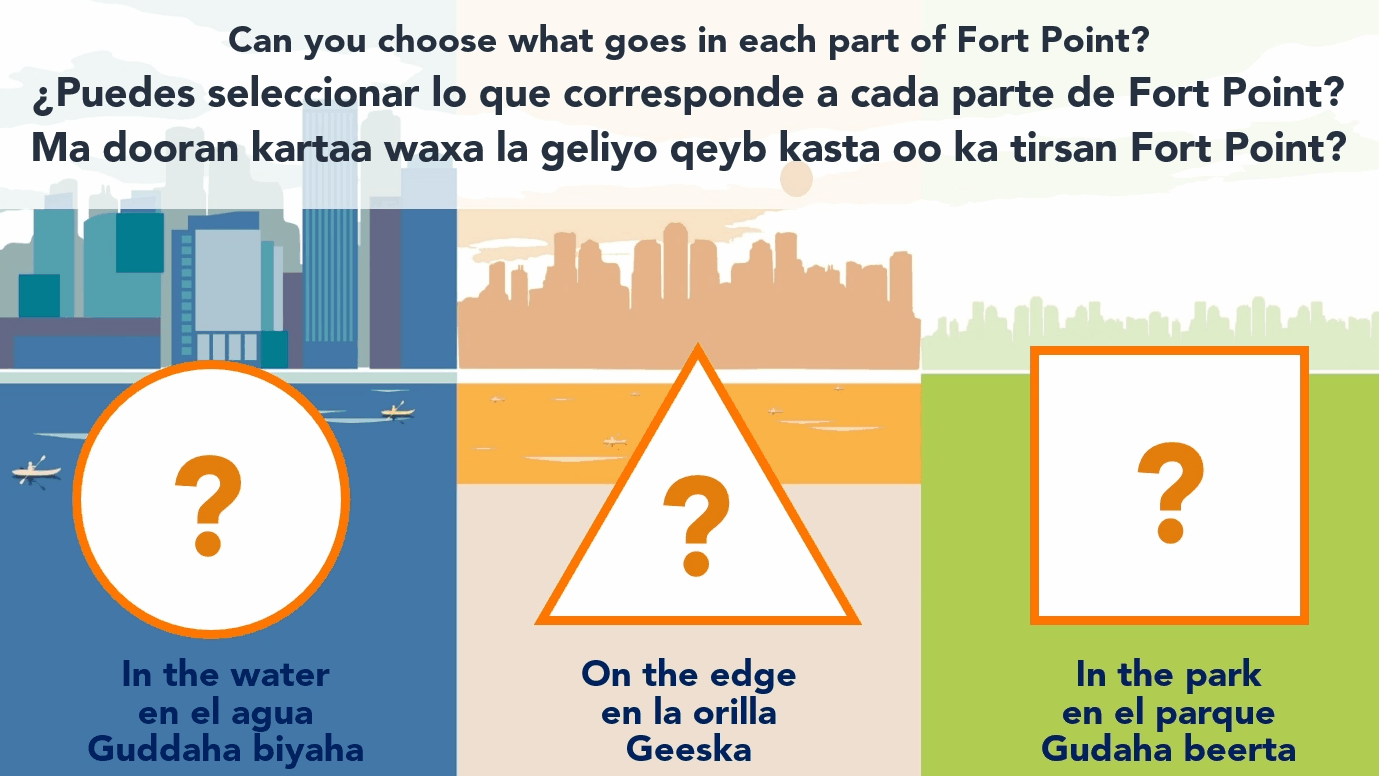
During the interactive virtual session and discussion, families shared their preferred activities for the new Fort Point parks, with a strong preference for places to enjoy fish/wildlife, play in a waterfront fountain, and relax and have fun with family and friends in shady, grassy areas. A great range of multigenerational activities in close proximity to one another was a common theme. (Graphics by Lanmuzhi Yang)
“I appreciate that the pandemic didn’t reduce people’s enthusiasm for envisioning their future parks; on the contrary, being apart has made more people realize the importance of public spaces. Various formats of interactive virtual workshops have made it easier than ever for people to access and participate in the discussion.”
—Lanmuzhi Yang, Landscape Designer
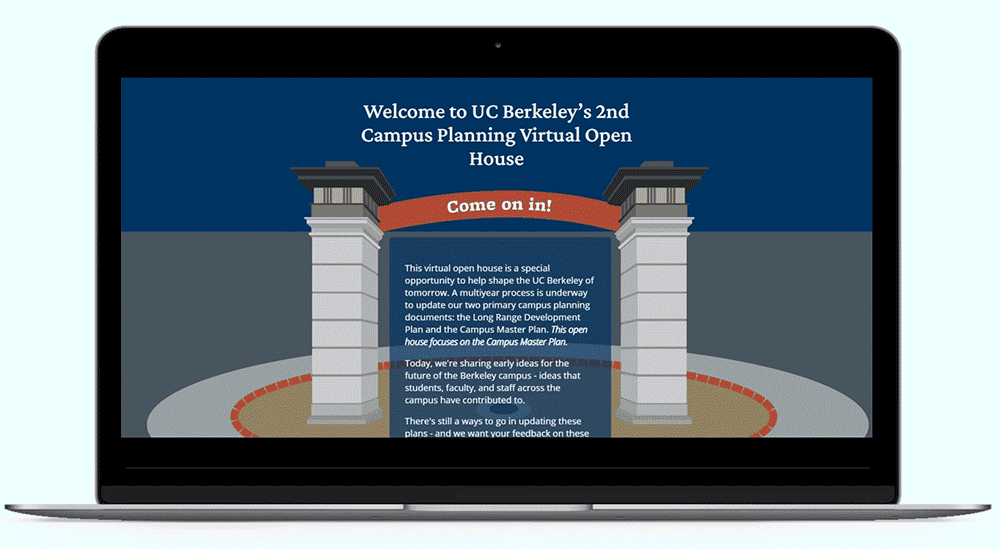
The website was an accessible way for both campus and city community members to participate in the planning process. Compared to an in-person open house, the website allowed participants to participate from anywhere and at any time, increasing access to sharing feedback.
UC Berkeley Virtual Open House Team: Raj Adi Raman, Kanna Atarashi, Diane Athaide, Caitlyn Clauson, Jill Allen Dixon, Timothy Gale, Ken Goulding, Chanwoo Kim, Kai Ying Lau, Elaine Minjy Limmer, Shannon Hasenfratz, Laura Marett, Patrick Murray, Paul Schlapobersky, Ann Tai, Eric Youngberg, Renyi Zhang
With large in-person meetings postponed for the foreseeable future, we have been experimenting with how to bring similar experiences into the virtual world. Websites, with some creativity, can offer engaging experiences to share information about a current planning process and gather community input. Over the past year, we have designed two virtual open houses as part of the UC Berkeley Campus Master Plan and Long-Range Development Plan processes. These virtual open houses replaced in-person events that were originally planned. In the end, the two websites made the process accessible to a greater number of people than typically would have been expected to attend in-person open houses.
The first virtual open house shared key analysis findings, and the second open house shared emerging “big ideas” for the Campus Master Plan. Both provided a range of interactive questions including: selecting preferred styles of collaboration spaces, imagining experiences along Strawberry Creek, prioritizing investment across potential projects, and designing what should be included in your ideal interdisciplinary hub. The data received from the first open house helped identify key priorities for the Campus Master Plan, including increasing sustainability and resilience, creating a more inclusive campus, providing increased housing, and improving outdoor spaces. The second open house recently closed, and we are now in the process of analyzing the feedback received.
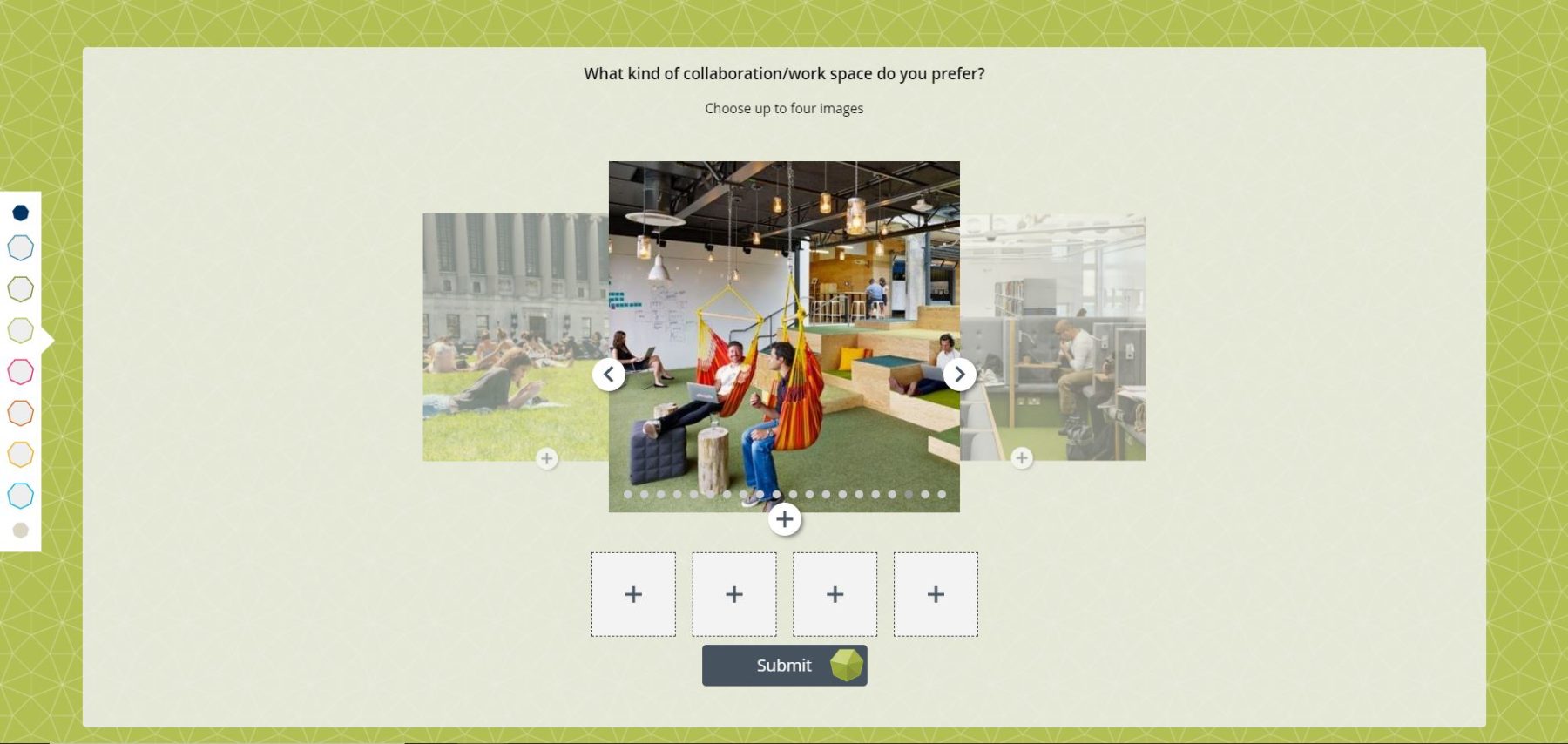
Users could scroll between existing and proposed images of campus, and learn more about key ideas by clicking on icons for more information.
